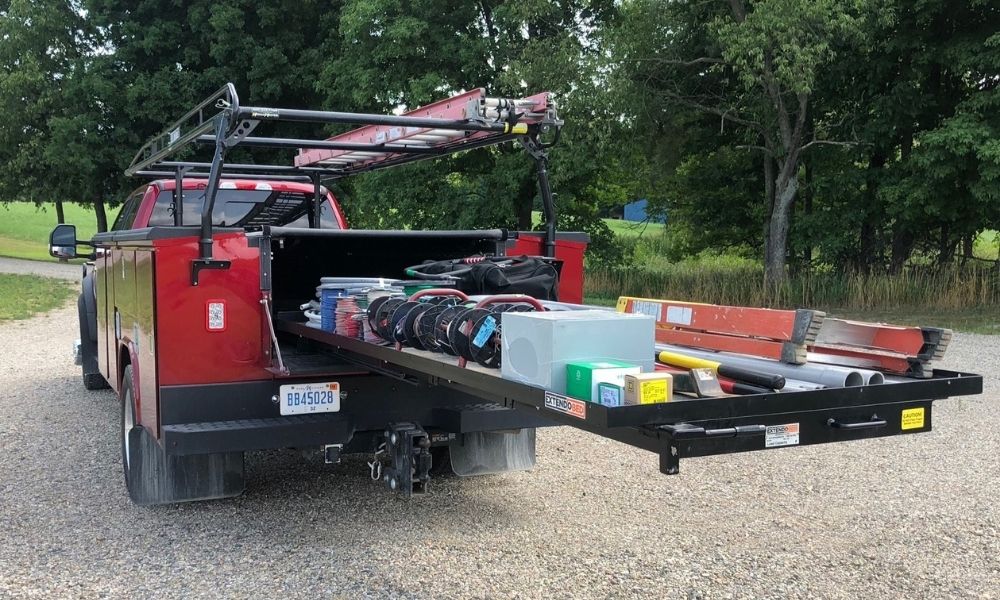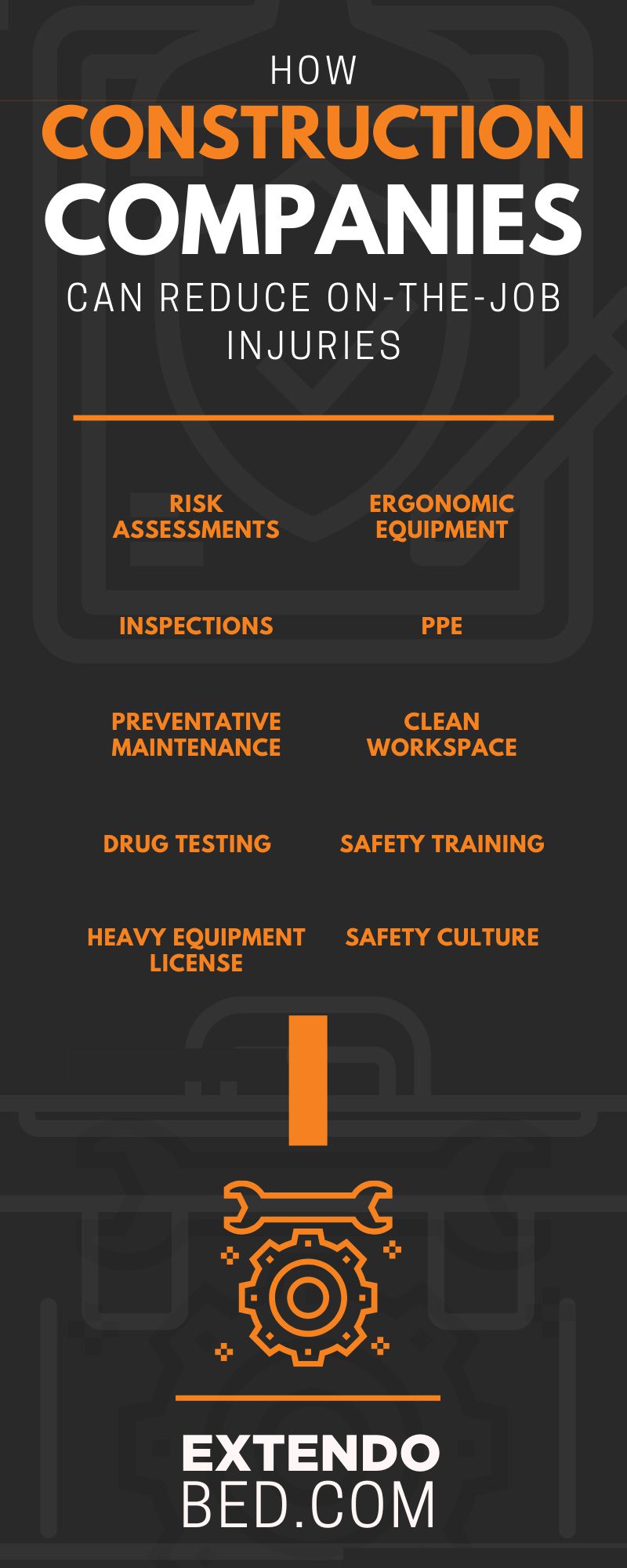
Construction is one of the hardest and physically demanding jobs in the world. Employees constantly put their lives on the line to build massive structures. However, companies have a responsibility to protect their workers as best they can from any potential injuries and risks on the job. That’s why they need to know how construction companies can reduce on-the-job injuries.
The first thing anyone in charge of a construction site needs to do is run a risk assessment meeting before construction even starts. By running a job hazard analysis, potential risks to employees’ health on the site can be identified. Identifying these unique risks can save workers’ lives and company money in the long run. Any findings in these assessments must get shared with every worker who will be onsite so they know what to expect and avoid.
The biggest cause of death on construction sites is falling to one’s death. There’s little anyone can do if they start falling, and that’s why it’s important to plan and implement preventative measures. Things such as guardrails and nets can spell the difference between life and death for workers. Safety measures should get planned early and account for changes in the site as construction continues.
Another common cause of a lot of construction injuries is slipping or tripping. Although this may seem like a simple problem, a bad slip can really damage people and prevent them from working. The best way to avoid these issues is to clean up the area and get rid of any spilled liquids or obstacles that might cause someone to trip.
Problems should be identified and inspected as early as possible so they can be stopped before they turn into major risks. The best way to find these issues is by running frequent inspections that search for any potential dangers. Such inspections should be run frequently—such as every few weeks—as construction sites constantly change and new risks pop up. Workers deserve the best protection; part of this can be accomplished by regular, thorough inspections.
Focusing on preventative maintenance is essential. Just like its name suggests, it’s all about maintenance that stops things from turning into huge problems. For instance, all tools and equipment will eventually break as time goes on. Needless to say, breaking or failing equipment on the job is very dangerous. Any potential issues in equipment should be taken care of before it becomes a problem—especially if someone is about to use it. Equipment must be examined during inspections for any signs of damage. Replace or repair poor equipment before it fully breaks to keep workers safe. Otherwise, tools could break in the middle of being used, therefore causing injury to the person using them.
A lot of other onsite injuries come from performing basic tasks with poor equipment that doesn’t account for worker safety. Repeated stress injuries are very serious and arise from workers who perform the same action—usually in an awkward position—multiple times until they hurt themselves. Such injuries can be avoided with equipment like custom truck bed storage that promotes healthy lifting and unloading. This way, workers won’t hurt themselves performing everyday tasks.
A lot of injuries in construction sites come from an unclean workplace—namely, obstacles in the walkways or equipment and tools that are in the way of workers. Everyone must put away all their tools when they’re done using them to prevent mix-ups and messy areas. Leaving tools lying around isn’t only unproductive, but also dangerous for the employees and anyone trying to access the area.
Most companies use the legally required amount of personal protective equipment (PPE) for their workers, but more can always be used to keep employees even safer. While hardhats are useful as PPE, they aren’t enough to thoroughly protect workers. Investing in excellent PPE is a sign of investing and caring about the people on job sites. Additionally, PPE should always get examined during inspections.
Working with heavy equipment and in a dangerous area requires all workers to have their wits about them. If someone is under the influence, they should never come into work and operate dangerous equipment. That’s why a lot of construction companies use drug testing to encourage workers to show up clean and stay safe because of it. That isn’t to suggest running constant drug tests is a good idea. But running them, even infrequently, will teach everyone that they can’t risk coming into work while under the influence.
Investing in workers is key to keeping them safe—and there’s no better investment than safety training. Company-wide training is very important as it teaches everyone at the same time. That way, everyone is on the same page and can communicate better than before. This results in safer work conditions for everyone and more efficient communication as people know what they’re talking about and what’s expected of them.
Even with all these methods of protecting people as they work in construction sites, accidents and injuries can still happen. That’s why a proper response plan can help people who get hurt. Having a few first aid kits on hand can save someone’s life. Training sessions can teach employees the proper way to respond to injuries. This way, everyone knows the best practices and less confusion should arise in such situations.
A lot of construction sites make use of heavy machinery and vehicles, both of which are very dangerous. That’s why it’s vital for anyone using any heavy equipment, machinery or tools must be properly trained to so do. For example, a crane or a forklift can cause a lot of damage and even kill people if employees aren’t careful. That’s why proper training is absolutely necessary. Someone who has a heavy equipment license will know how to operate potentially dangerous vehicles; therefore, ensuring the people who will operate such heavy vehicles and machinery have the proper license is absolutely essential to the safety of a worksite.
Another way companies can keep their workers safe is with a focus on creating a work culture that prizes safety above all else. A good safety culture will encourage everyone to stay as safe as possible. Additionally, as employees work within a positive work environment where their safety matters, they’ll actively encourage this protective behavior in each other. Fewer workplace accidents—whether big or small—will have the chance to happen when employees are looking out for one another.
These are just the simplest and biggest methods on how construction companies can reduce on-the-job injuries. Following these steps will help you keep your employees safe during construction and better the lives of everyone.
